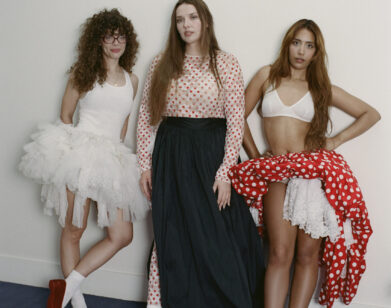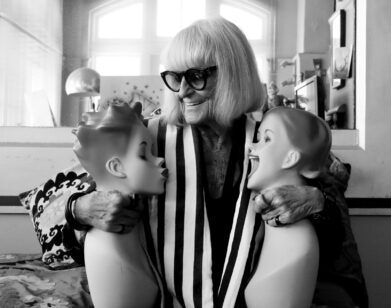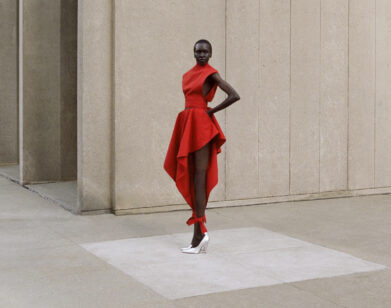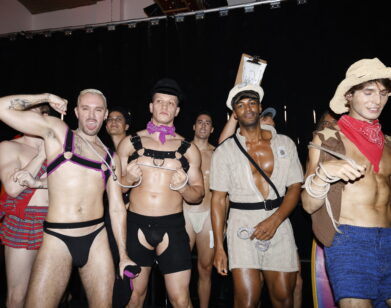FASHION!
Telfar is New York Fashion Week’s Guiding Light
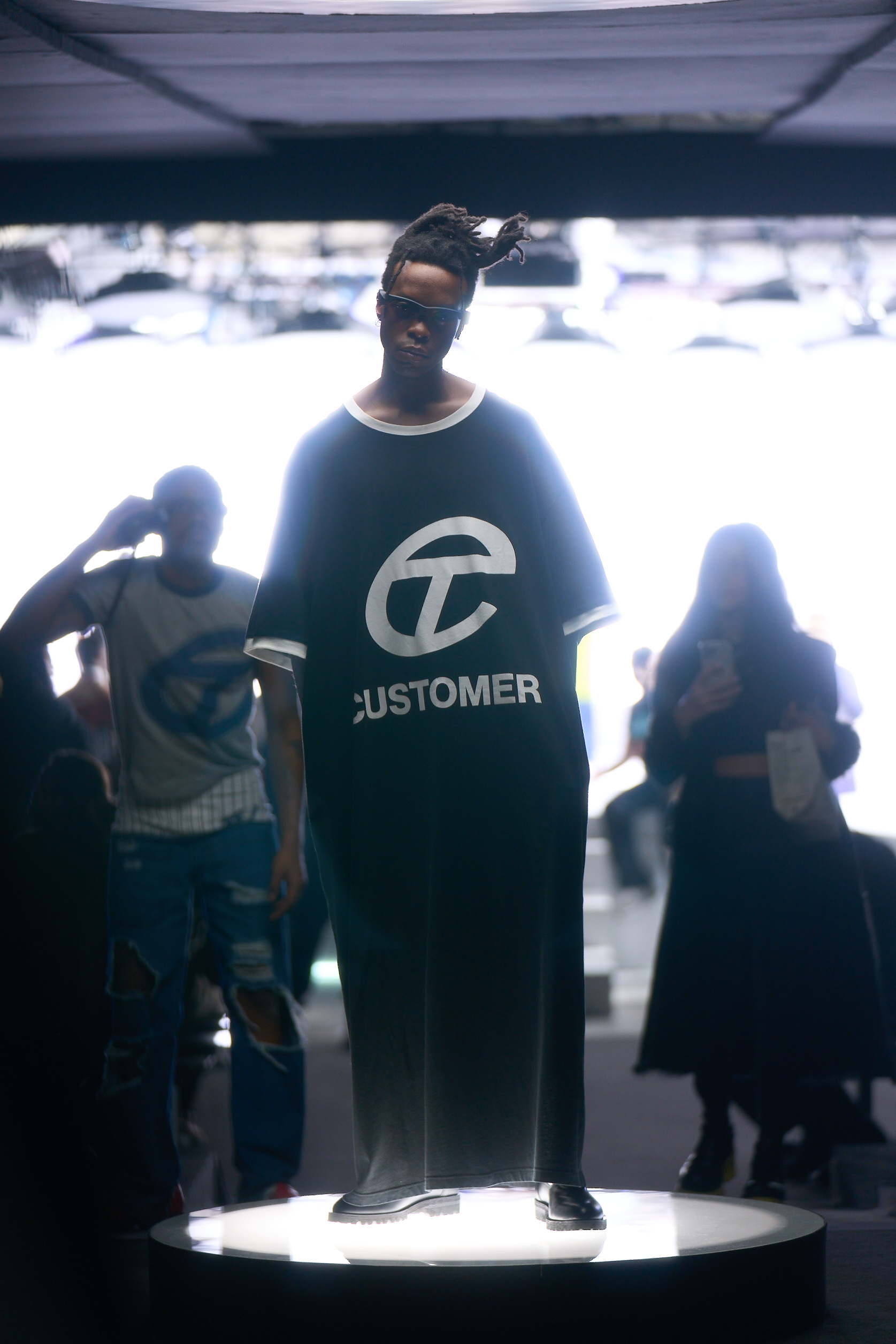
Telfar at New York Fashion Week. Photo by Dan Lecca. Styling by Avena Gallagher.
After a long, sluggish week marked by the absence of some of the biggest names in fashion, unisex ready-to-wear brand Telfar closed out NYFW with an extravagant presentation live-streamed from their studio in South Street Seaport. The collection of innovative, post-seasonal looks was presented alongside a screening of TELFAR TV THE MOVIE—a compilation of clips from the brand’s 24-hour live streaming platform/virtual storefront, TELFAR TV. The film was punctuated by call-ins from fans, commentary from brand ambassadors including Ian Isiah and Gitoo Cuchifrito, and poetry from the cultural theorist Fred Moten. The collection, presented in a two-part runway show with musical accompaniment from the experimental jazz outfit Standing on the Corner, proved once again that Telfar—a Black-owned brand that is pushing the traditional confines of the fashion industry—is a guiding light when it comes to defining the culture and style of our fledgling decade. After the show, we caught up with the label’s founder and creative director, Telfar Clemens, and its artistic director Babak Radboy, to talk about what comes next.
———
TAYLORE SCARABELLI: Hi guys. How was the show?
TELFAR CLEMENS: The show was beautiful. There were a lot of really cool new things that we had been storing up. It’s our new path, our new journey.
SCARABELLI: It feels like it’s been a minute since you’ve done a full, proper runway show.
BABAK RADBOY: We did two shows that no one knew were shows. The Olympics, which was a runway show, we walked the opening ceremony, then we did the press conference [last September]. When we announced TELFAR TV, we were showing a new collection, we just didn’t mention it.
SCARABELLI: Right.
RADBOY: I think that the quote from Cathy Horyn was, “No clothes were shown.”
SCARABELLI: So she didn’t get it?
RADBOY: That’s magic though, because it means that there’s a gap between the semiotic and the phenomenological. You literally came to a fashion show, saw a fashion show, and didn’t see a fashion show.
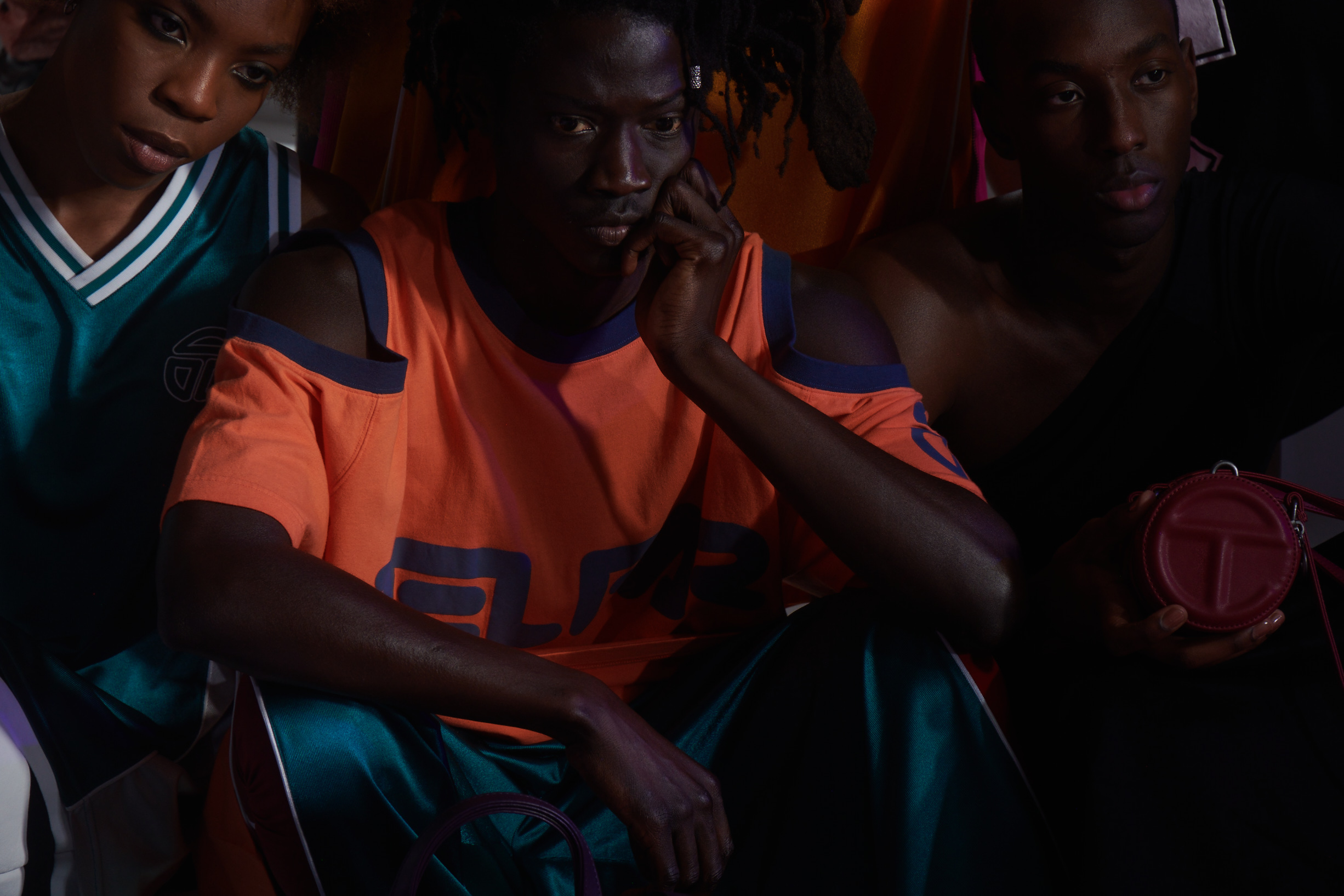
Photo by Jason Nocito.
SCARABELLI: Maybe it’s because people are just so obsessed with the bag that it’s all they see. Are you trying to move away from the emphasis on that product?
CLEMENS: I love everything that product has brought me, but people need to know that I am a clothing designer and I design everything. The bag wasn’t the beginning of the brand.
SCARABELLI: It wasn’t.
CLEMENS: That’s a big part of what the channel’s about, educating people about what the brand’s about.
SCARABELLI: Are you going to keep the channel going?
CLEMENS: Yeah, I don’t really see going back, going backwards seems old.
SCARABELLI: What’s your vision for that? What kind of content are you going to be putting out?
CLEMENS: We’re going to keep collaborating with people to figure out what feels right to us. We’re definitely going to be making a lot of stuff with our friends. I mean, we want to take it slow. We don’t want it to grow fast. I want people to understand what they’re looking at—what it is, who it is, why they’re watching it, even if they don’t know.
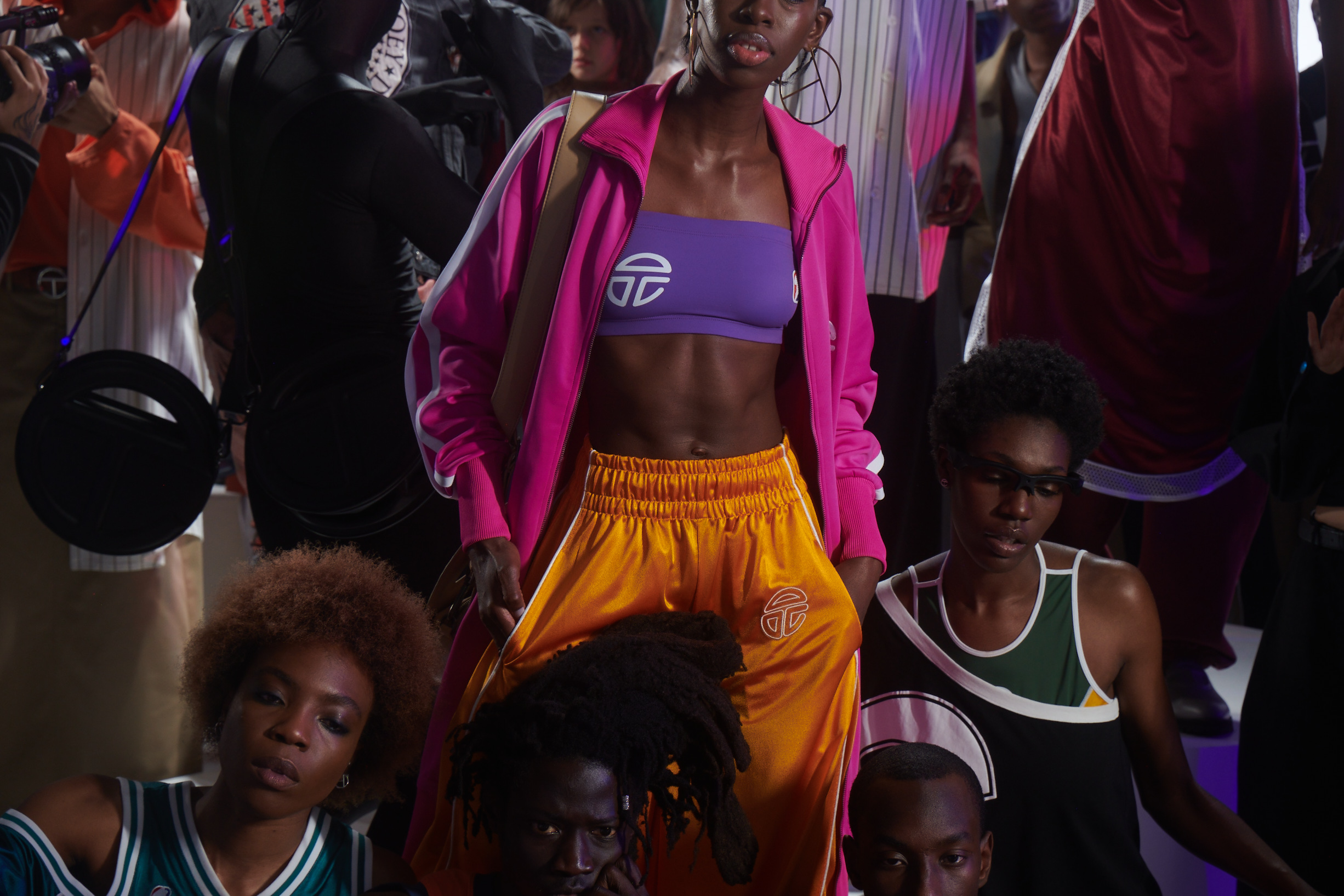
Photo by Jason Nocito.
SCARABELLI: A lot of brands burn out, especially brands that get as much attention as you have. It’s like the shooting star phenomenon. Right?
CLEMENS: I don’t know. Chanel is around.
SCARABELLI: That’s true.
CLEMENS: When things are good they’re around. I’ve been around since I was a teenager, since before the internet. I’m not really worried about that. I think we’re more worried about people not understanding anything about the brand and just only knowing a bag. I think that that’s burning out.
SCARABELLI: So for your new collection, do you want to keep selling it direct-to-consumer online or are you trying to get into stores?
CLEMENS: The collection that we released today is an evergreen collection, so it’s going to be around forever.
SCARABELLI: Interesting.
CLEMENS: Yeah. It wasn’t a seasonal thing. I think we’re moving less and less around seasonal things and we’re just going to have things. And this is leading up to us having a retail environment where you can buy these clothes and you can try them on. I think that that’s the next step and the channel’s going to support all of these different things that we want to do.
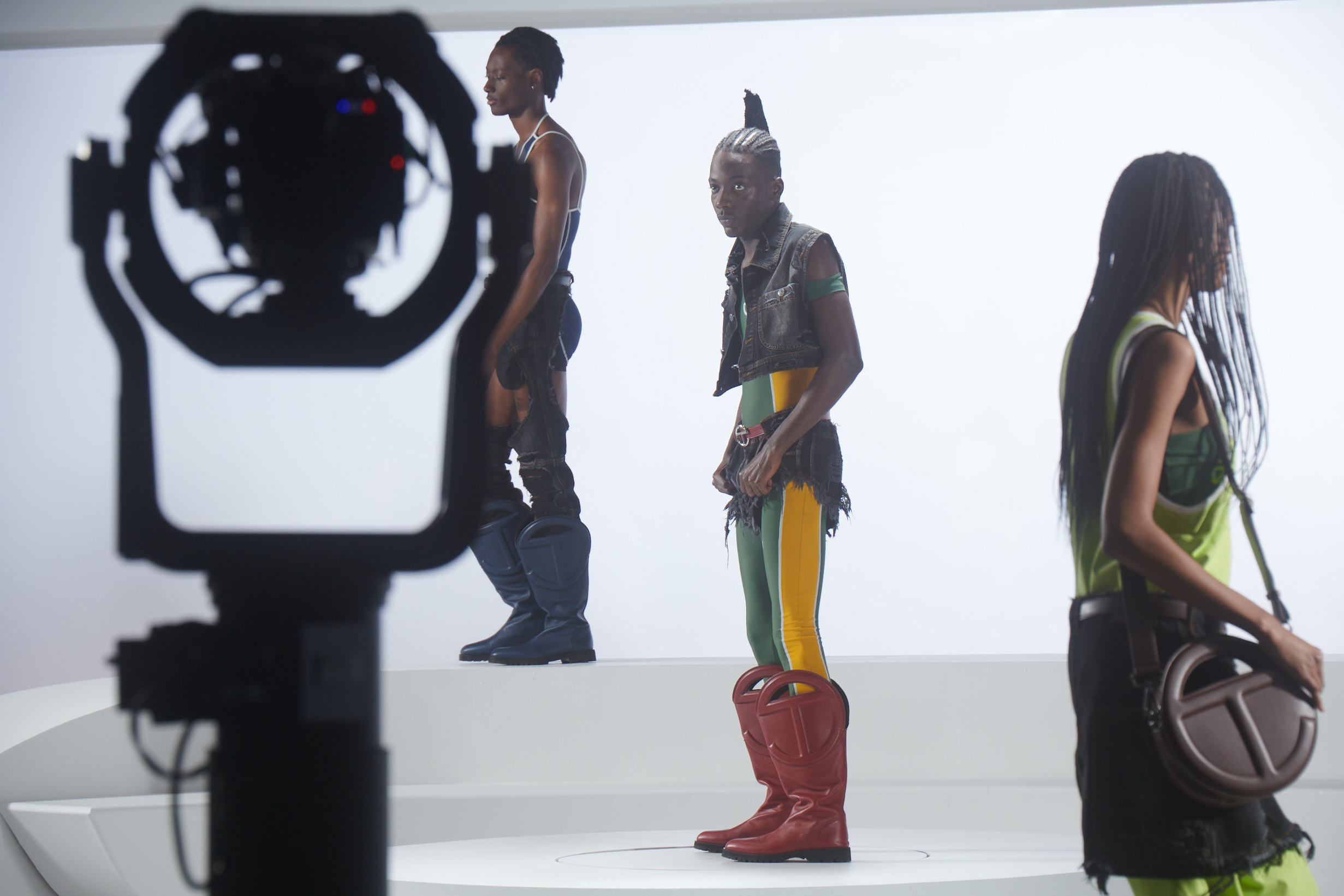
Photo by Jason Nocito.
SCARABELLI: So how do you go about creating basics or essential pieces?
CLEMENS: That’s just what I do. I make the clothes that you actually wear. It’s like the most staple things. It’s clothes that we were working on pre-pandemic, and there’s a build up of all these different experiences that we’ve been having. We’ve been making clothes for people to buy, making them at the right price, making them not just for the runway.
SCARABELLI: So you’re thinking about pricing, but also producing clothes in a chaotic world—
TELFAR: Yeah. I want it to be comparable to what the bag is priced like. So clothes would be easy to obtain and lots of people would have them, which would make them a thing.
SCARABELLI: Do you think about sustainability? Obviously that’s an oxymoron in fashion.
TELFAR :I don’t know how long I’m going to be around so I don’t. Am I sustainable?
SCARABELLI: Is anybody sustainable?
TELFAR: That also just sounds like a thing that people who don’t have problems complain about.
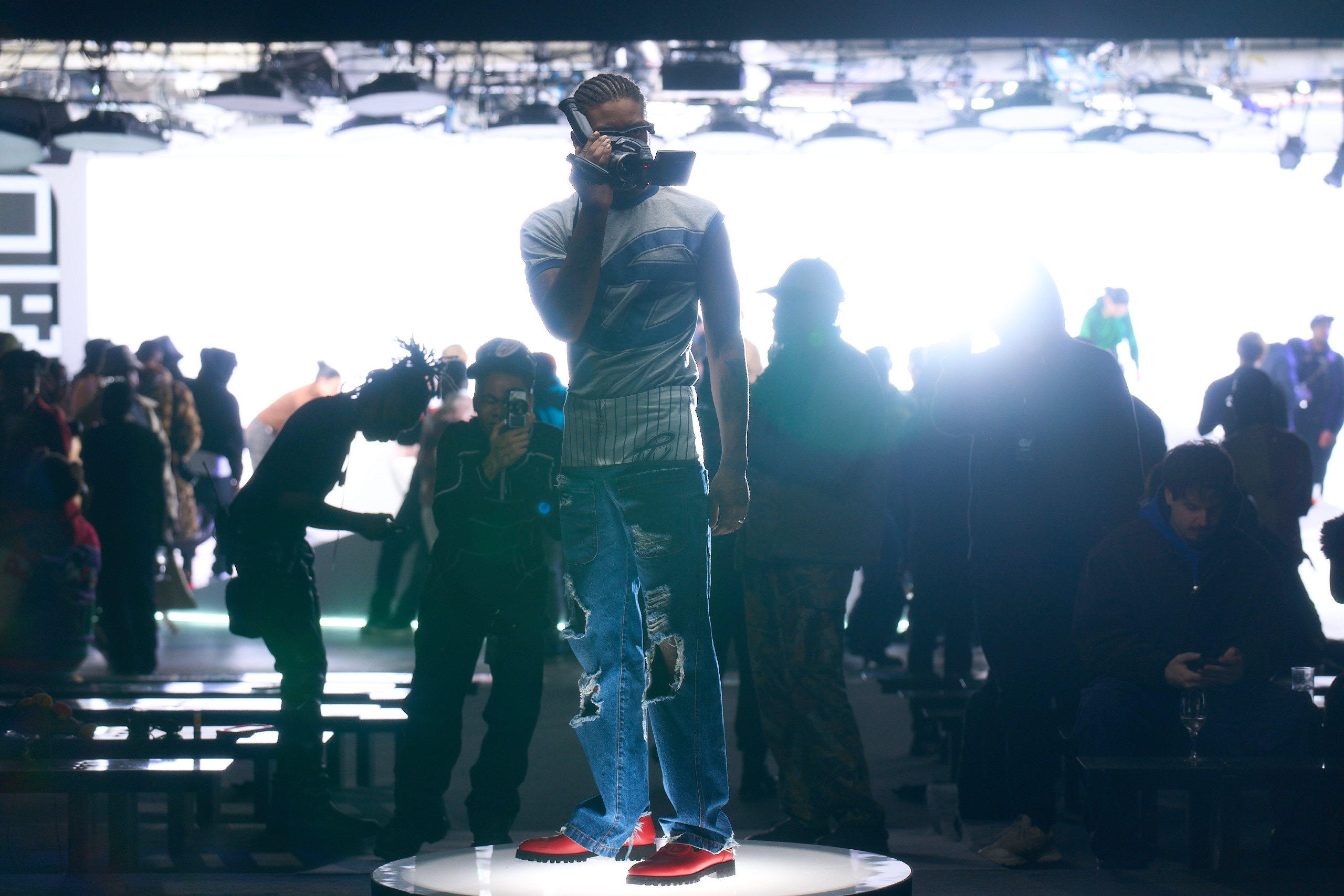
Photo by Jason Nocito.
SCARABELLI: That’s true. Who do you envision wearing this new collection?
TELFAR: Everybody.
SCARABELLI: Even the grannies?
TELFAR: I’m a granny.
SCARABELLI: Me too.

